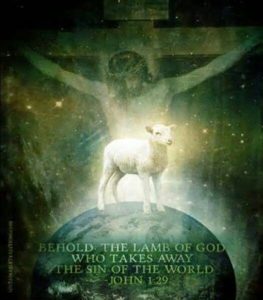Apr
21
The Ten Commandments on Easter?
“Then the Day of Unleavened Bread came when the Passover lamb had to be sacrificed. Jesus sent Peter and John, saying, “Go and prepare the Passover meal for us, so we can eat it.”… So they went and found [the guest room] just as He had told them, and they prepared the Passover.” — Luke 22:7-8,13 (HCSB)
The Ten Commandments (1956) — with Charlton Heston, Yul Brynner, Yvonne DeCarlo, et al. — is a true, cinematic classic. But, why does it always air around Easter time? I got an email from someone whose mailing list I was on, and he began it this way:
“It’s the Easter weekend, which means we get the annual showing of the Ten Commandments movie…. Don’t get me wrong — I like a good flick as much as the next guy. But the Ten Commandments? On EASTER? Always seemed a little strange to me, since it has nothing to do with the life, death, or resurrection of Christ.”
But, he’s wrong.
Now, one might say there is nothing directly involving the life, death, or resurrection of Christ. Obviously, since those events took place roughly 2000 years ago, and the events represented in DeMille’s production were more like 3400 years ago. However, anyone familiar with both sets of events should be able to see the link: namely, Passover.
The film in question is about Moses leading the children of Israel out of captivity in Egypt. Before he did this, he pleaded multiple times with the Pharaoh to “Let my people go!” Each time Pharaoh declined, God afflicted the land (i.e., water, crops, livestock, and/or people) with horrific punishment. These are often referred to as the ‘Ten Plagues’. The last “plague” was when the Angel of the Lord went from household to household, killing the firstborn males throughout Egypt — human and livestock alike were affected, from Pharaoh’s family on down (Exodus 11:1 – 12:29).
But, God had Moses tell the Israelites beforehand that they would be protected if each family slaughtered an animal and smeared its blood over the top and sides of their front door. This was a sign for the angel to “pass over” that home, leaving the inhabitants alone.
“Then Moses summoned all the elders of Israel and said to them, “Go, select an animal from the flock according to your families, and slaughter the Passover animal. Take a cluster of hyssop, dip it in the blood that is in the basin, and brush the lintel and the two doorposts with some of the blood in the basin. None of you may go out the door of his house until morning. When the Lord passes through to strike Egypt and sees the blood on the lintel and the two doorposts, He will pass over the door and not let the destroyer enter your houses to strike you…. Now at midnight the Lord struck every firstborn male in the land of Egypt, from the firstborn of Pharaoh who sat on his throne to the firstborn of the prisoner who was in the dungeon, and every firstborn of the livestock.” — Ex. 12:21-23,29 (HCSB)
 The animal slaughtered for this purpose had to be an unblemished, one year-old, male sheep or goat. As you may recall, one of the titles of the God-Man, Jesus of Nazareth, is the “Lamb of God”. This is because He was “sacrificed” on a Roman cross during the Passover feast (i.e., actually a week-long holiday). He was therefore the ultimate Paschal (or, Passover) Lamb, and through His blood His people are saved. That right there is a pretty strong connection between The Ten Commandments film — which included the plagues and first Passover — and the Easter (or, Resurrection Day) celebration.
The animal slaughtered for this purpose had to be an unblemished, one year-old, male sheep or goat. As you may recall, one of the titles of the God-Man, Jesus of Nazareth, is the “Lamb of God”. This is because He was “sacrificed” on a Roman cross during the Passover feast (i.e., actually a week-long holiday). He was therefore the ultimate Paschal (or, Passover) Lamb, and through His blood His people are saved. That right there is a pretty strong connection between The Ten Commandments film — which included the plagues and first Passover — and the Easter (or, Resurrection Day) celebration.
But, I’m not done, ‘cuz there is another connection. The exodus was God’s rescuing of the Hebrews out of captivity and oppressive slavery in a foreign land, setting them apart as a “special possession” for Himself (Ex. 19:5), and leading them into the Promised Land (i.e., the land He promised Abraham would be given to his descendants). God then made a covenant, mediated through Moses (thus, this “old covenant” is often called the “Mosaic Covenant“), between God and the Israelite people.
The death and resurrection of Jesus Christ, the Lamb of God, ushered in the new covenant for the era in which we now live. Under this new covenant, God’s favor is no longer focused solely upon the Hebrews, i.e., Jews. Now, the promise of redemption — salvation from God’s wrath and of eternal life in His presence — is given to everyone who repents of their sin and places their trust in Him. Put another way, he rescues His people from slavery and bondage to sin. This includes “Gentiles” from every tribe, language, people, and nation (Rev. 5:9). This is the ultimate Promised Land!
I think the parallels and connections are clear. This is why it is important to have a grounding in the Old Testament as well as the New Testament. The former helps us to understand the latter.















